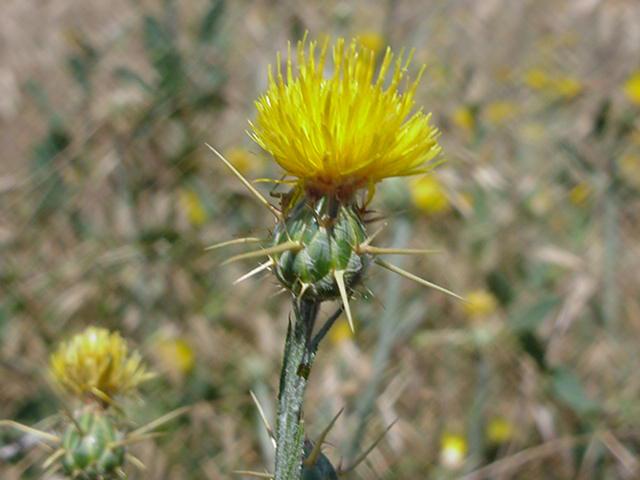Yellow Starthistle (Centaurea solstitialis L.)
 Identification
Identification
Yellow starthistle is native to the Mediterranean region of Europe. It is thought to have been transported to California in hay seed. This plant is considered a noxious weed and is included on the State Noxious Weed list. Yellow starthistle is a winter annual, which means that it completes its lifecycle within 12 months, from winter to late spring. The bright-yellow flowerhead consists of many individual flowers and bracts. Each bract is armed with a stout, straw-colored spine 1 to 2 inches long. The stem is white-wooly and branches from the base and above to form a bushy plant, 1 to 2 feet tall. The leaves are white-wooly, and are deeply lobed, 2 to 3 inches long.
Yellow starthistle depends on seed production for population survival. A single yellow starthistle plant has the potential to produce up to 150,000 seeds. This plant produces two types of seeds: those with parachute-like plumes, and those without plumes. Studies of yellow starthistle seed dispersal suggest that more than 90% of the seeds fall within 2 feet of the parent plant, creating a slow invasion front. Yellow starthistle is a serious problem on rangeland, pastures, roadsides, and wastelands.
This species displaces native plant communities and reduces plant diversity. Yellow starthistle forms solid stands that drastically reduce forage production for livestock and wildlife. This plant is poisonous to horses, causing a nervous disorder called “chewing disease”. Livestock can be injured if they are forced to feed on the spiny portions of yellow starthistle.



